NPHC Plaza at Iowa State: Representing and Uplifting the Black Community
Lemony Snicket once wrote the word ‘Sanctuary’ means “a small, safe place in a troubling world. Like an oasis in a vast desert or an island in a stormy sea.” Or a plaza at Iowa State University (ISU), which creates a sense of belonging and celebrates Black history and legacy.
Sorority and fraternity members of the National Pan-Hellenic Council (NPHC) wanted to create a place in the heart of campus, near the memorial union, to focus on uplifting the Black community, bringing awareness to racial inequities, and embracing campus diversity.
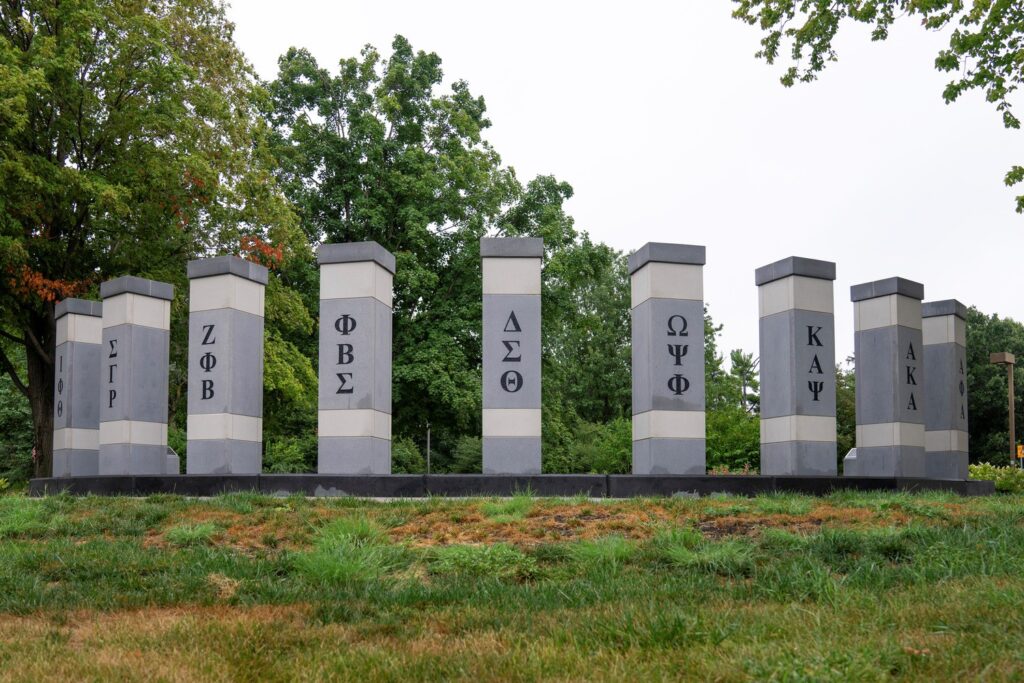
The NPHC is an organization that includes nine sororities and fraternities, nicknamed the ‘Divine 9,’ committed to ensuring equitable outcomes for Black people due to racial isolation on predominately white campuses.
NPHC History
The NPHC was founded on May 10, 1930, at Howard University in Washington, DC and incorporated under the laws of the State of Illinois in 1937. The organization represents nine historically Black Greek-letter sororities and fraternities. The NPHC was formed to promote brotherhood and sisterhood, advancements in academic excellence, community involvement, and cultural awareness. Over the years, the NPHC has played a pivotal role in advancing civil rights and social justice. Each member organization has made important contributions to the Black community and society as a whole.
The nine NPHC groups underwent change during a time when Black people were denied fundamental rights and privileges. With racial isolation and social barriers on predominantly white campuses, a deep desire emerged for Black people to seek out other individuals with shared goals and experiences.
Sororities and fraternities were heavily involved in progressive social justice movements, such as the Women’s Suffrage, Civil Rights Movement, and Black Lives Matter. These groups continue uniting Black communities across the country, while helping many social causes.
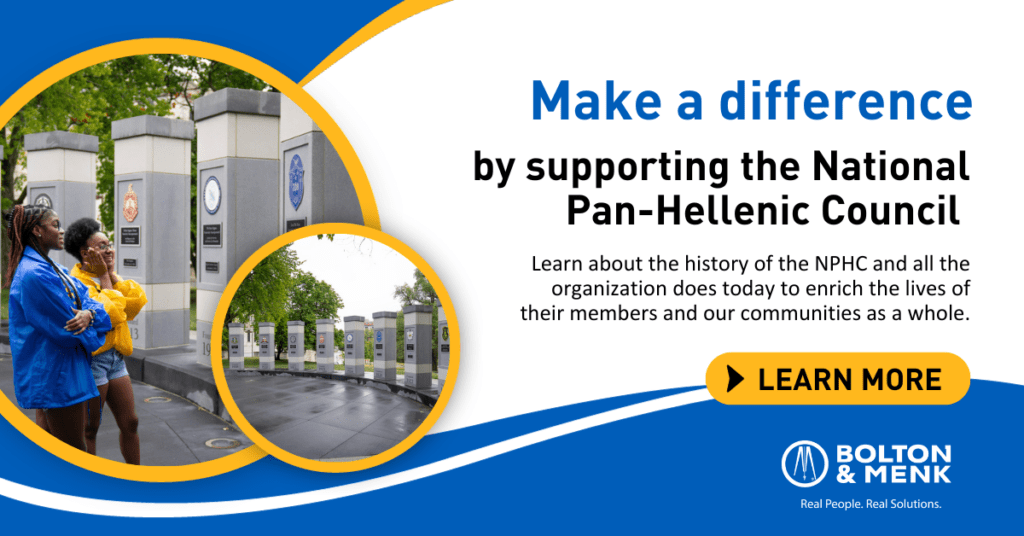
The Beginnings of the NPHC Plaza
This plaza project was a grassroots movement initiated by students at ISU who were passionate about creating an inclusive space to help them feel celebrated while honoring Black culture. At the project’s idea and inception phase, two ISU architecture students designed their initial vision for the plaza, which eventually came to fruition through collaboration with Bolton & Menk, NPHC members, Watch The Yard, and stakeholders.
Jonathan Hall, member of the Alpha Phi Alpha fraternity, was a student seeking a degree in Civil Engineering at Iowa State University. He eventually became his fraternity’s chapter president and took on the role as council president for the NPHC on ISU campus. In the early phase of the plaza project, Julian Neely, Jonathan’s fraternity ‘big brother,’ and at the time, the VP of Public Relations for ISU’s NPHC and member of Alpha Phi Alpha Fraternity, INC., spearheaded the NPHC plaza project, and eventually, the project transitioned to Jonathan to fully take over.
As a student, Jonathan was eager to take over the project’s inception. With his chapter and council responsibilities, he became the nuclei of getting everyone on board with the project, including senior faculty, alumni representatives, and community stakeholders. After the project’s groundbreaking, Jonathan graduated and joined Bolton & Menk first as an intern, then became a full-time employee.
When members of the NPHC were seeking designers and consultants for the plaza, they wanted a project partner that would be able to deliver a more diverse cast and was familiar with the NPHC. Bolton & Menk was willing to outsource their work and do research to meet these requirements. With this collaborative effort between ISU and the NPHC, Bolton & Menk recognized the power of partnering with the community to create a space that recognized the Divine 9 and their value to ISU, while achieving the largest project of its kind in the Midwest.
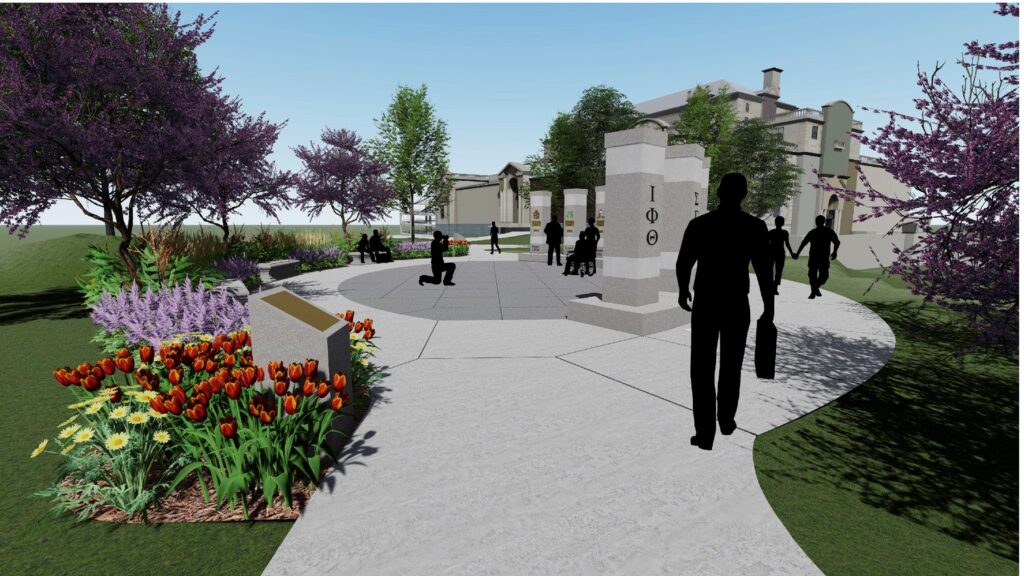
Marcell Walker, Director of Partnership Development and a Senior Associate at Bolton & Menk, was brought into the project, coincidently, without anyone knowing he was member of the NPHC. His role was to understand the dynamic value of partnerships by involving stakeholders in the project, sharing their desires, and meeting and exceeding their expectations.
Marcell joined the Kappa Alpha Psi fraternity while in college, and to this day, identifies as a member in the present tense. “Black fraternity and sorority memberships are lifelong and continue on, even as members graduate to alumni,” Marcell explained.
Marcell was able to bring in Watch The Yard, a Black media company, who wanted to bring awareness to the plaza project. Watch The Yard was founded by a member of Kappa Alpha Psi and is the largest digital platform for NPHC content globally that chronicles and centers around the culture of historically Black fraternities and sororities.
Watch The Yard created an informative stakeholder outreach video and article to convey the vision of the NPHC plaza. This video and article allowed the project team to devise solutions that aligned with the perspectives of all project stakeholders. The project made its public debut on social media in December 2020, garnering nearly 100,000 video views. The responses from both the local and wider NPHC community have been exceptionally in favor of the project and its symbolic representation of progress and community.
Final Design and Symbolism of the NPHC Plaza
The project’s design concluded in December 2020, with plaza construction completed in fall 2021. The final plaza design contains nine pillars, each representing the Divine 9, which are recognized Black Greek-letter organizations who are members of the NPHC. ISU contains 8 of the 9 chapters.
Each pillar contains one of NPHC’s individual shield, as well as each organization’s founding year and motto. For chapters seated on ISU’s campus, the charter date was added to the pillar to recognize the history the organization has on campus. At night, each pillar is lit with the respective organization’s colors on the front and back. The order of the pillars from left to right are the years in which each organization was founded, starting with the eldest organization to the youngest.
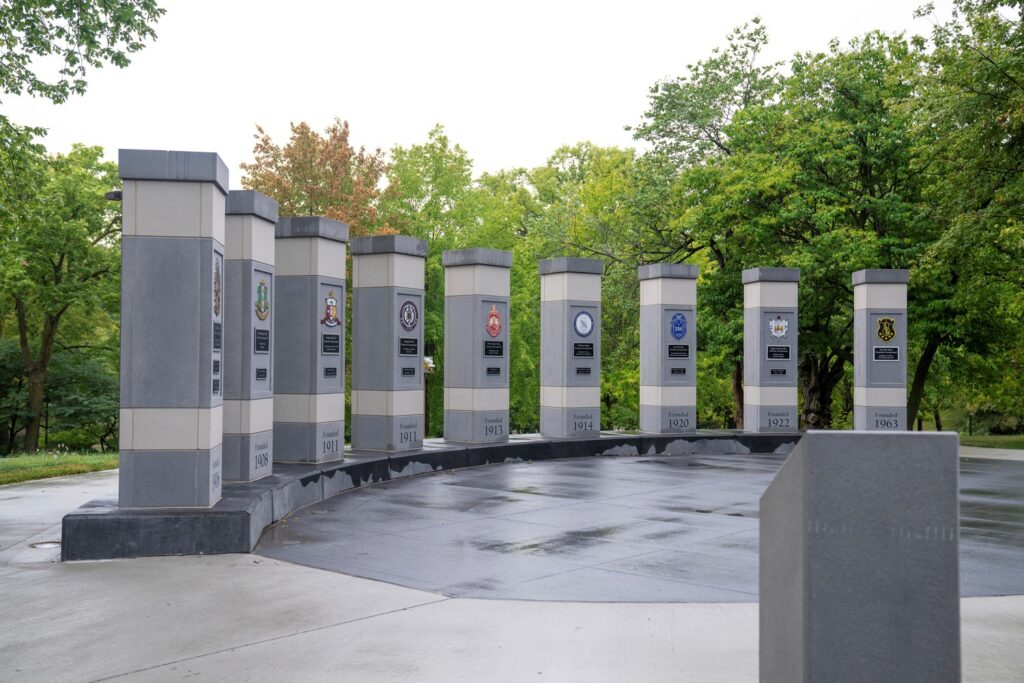
In addition to the symbolism throughout the plaza design, deciding the plaza’s location was imperative to making sure the Divine 9 are seen, heard, and valued on campus. The plaza was given a prominent location, next to the student union and financial aid office, and acts as a hub where student tours begin and end. This location recognizes the NPHC’s contributions to the community by being placed in a visible location to honor the Divine 9. Since the NPHC sororities and fraternities on campus do not have a place of their own to convene, such as chapter housing, it became of utmost importance that they have a place they can call their own.
This location also houses seating areas for people to gather, along with an electronic set up already implemented, so DJs and presenters can use the space for anything from presentations to yard and step shows. In designing the space, NPHC members wanted the space to be fully equipped and ready for any type of event to further their mission of honoring their culture.
The Most Memorable NPHC Plaza Moments
Marcell and Jonathan both agreed their favorite moment working on the project was seeing all aspects of the project come to life at the ribbon cutting ceremony.
“Personally, and professionally, the ribbon cutting ceremony felt like a culmination of a lot of things for me, from being very young in my Iowa State journey to also being trusted to spearhead such an important project. The gratitude from the people seeing the final project was overwhelming. The community helped me banish my self-doubt and recognize I was the right person for the job…seeing the happy tears, the screams, the shouts, and the congratulations all hit a little deeper, because this project brought so much impact and joy to everyone. I’m so thankful they entrusted me with this project and recognized the impact it brings to past, present, and future students,” recalled Jonathan.
Marcell recounted seeing the photos from the ceremony and felt this project had real impacts in people’s lives. He remembered taking pictures at the plot of land, before they even broke ground: “We were literally just standing on an empty plot of land, bundled up in the cold, talking about the vision of what this project could be. It’s great to see those visions come to life and have those emotions captured in the ribbon cutting ceremony.”

ISU alumni could witness new members experiencing the plaza for the first time, while feeling joy in a place that reflects their own experiences. Current students have this place to meet and a safe space of their own. For prospective students, it’s a place for them to be able to feel part of their community.
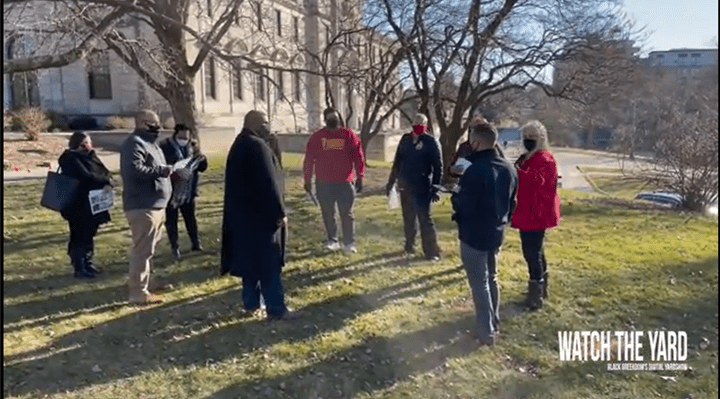
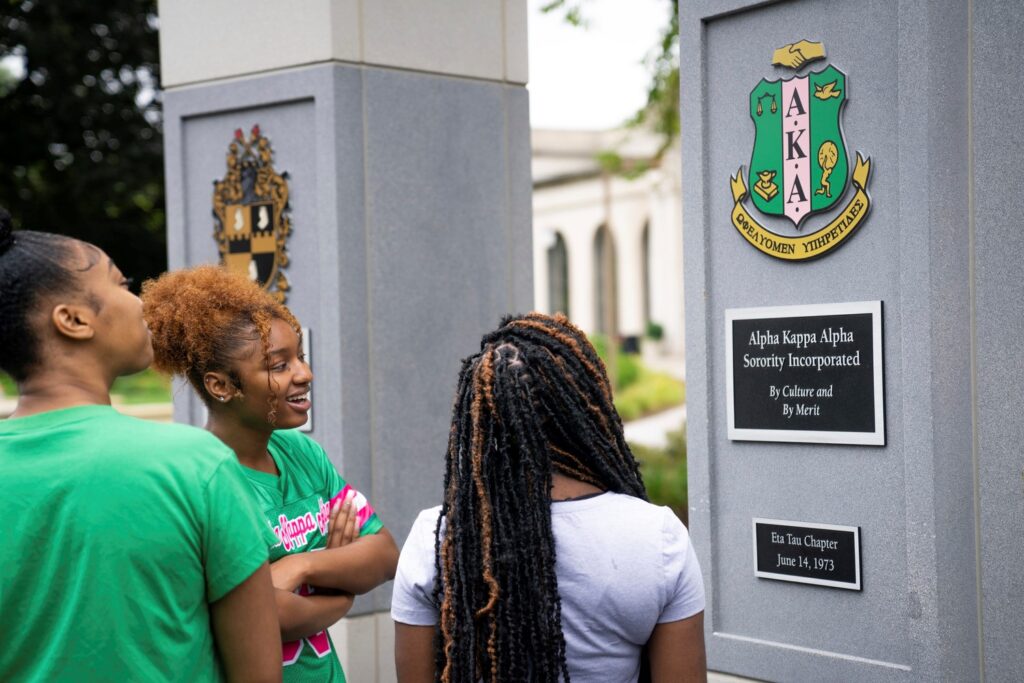
Hurdles of Achieving the NPHC Plaza
“Bringing this project to life on a predominantly white campus where NPHC is recognized in such a visible way is going to have a story behind it. A project like this can take 5-10 years in the making before a consultant comes on board. University campus projects are typically not simple or straightforward, and they require a lot of tenacity. We broke through barriers and overcame adversity to bring this project to life,” explained Marcell.
“…But it all starts with a dream,” Jonathan added.
How Can You Help?
If people can take the time to learn the history of the NPHC (even by reading this article), that first step will help further the legacy of the NPHC members and the plaza. The story of how the plaza came alive and the history of how NPHC organizations began are deeply intertwined and aligned—they are a testament to the history, strength, and tenacity of people who make up the NPHC.
“Just by looking at the plaza, you don’t even have to identify with being a member, you can embrace the feeling of acknowledgement and completion that many hands went through to create it. The legacy of the plaza will continue to carry on, through every foot that steps on it and with every eye that gazes upon it. This is a space that will stand the test of time, making sure that people feel seen, heard, and valued on campus,” detailed Jonathan.
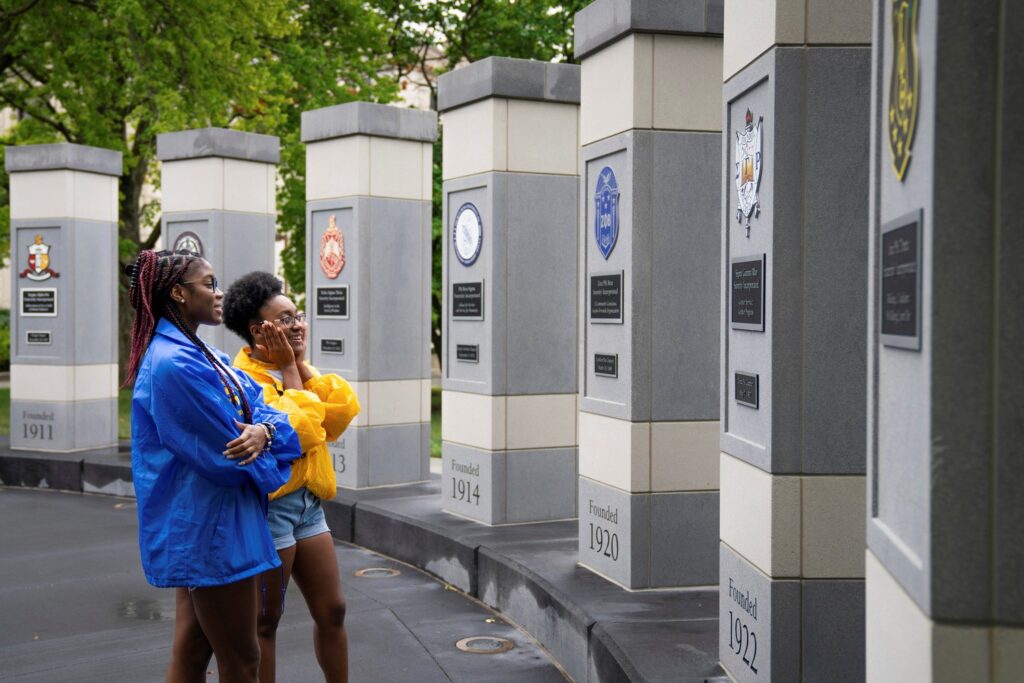
The plaza embodies the aims of diversity, equity, and inclusion (DEI) in a visible, tangible, and inclusive way. The NPHC encourages and builds community collaboration and visibility by partnering with other campus organizations like the Multicultural Greek Council, Black Student Alliance, National Society of Black Engineers, just to name a few.
“In our fraternity, we have members of our organization of other races from various places around the world. This is diversity, equity, and inclusion, both in the intangible and the tangible form…it touches a person holistically. It’s really a testament to ISU and their commitment to DEI, which is totally empowerment in practice,” Marcell explained.
After the culmination of the project, the NPHC plaza continues to provide important cultural and historical significance on the ISU campus by representing inclusivity. This was made possible by creating a platform for open, honest dialogue among stakeholders to express their thoughts, desires, and requirements for effectively representing the history of the NPHC. Both ISU and the NPHC Chapter have collaboratively established a communal space where past, present, and future students and their families can experience connection and unity.

 Jonathan is an aviation design engineer at Bolton & Menk whose professional career began in 2021. His responsibilities include design development, construction observation, and inspection. Jonathan’s passion for the field stems from his love for creating safe and sustainable solutions that help our clients thrive. When he’s not working, Jonathan enjoys participating in fraternity events and being with his close friends and family when possible.
Jonathan is an aviation design engineer at Bolton & Menk whose professional career began in 2021. His responsibilities include design development, construction observation, and inspection. Jonathan’s passion for the field stems from his love for creating safe and sustainable solutions that help our clients thrive. When he’s not working, Jonathan enjoys participating in fraternity events and being with his close friends and family when possible.
 Marcell is the director of partnership development, and a senior associate, joining Bolton & Menk in 2020. He is responsible for engaging small businesses and community-based organizations to explore meaningful partnership opportunities and better understand their outreach and engagement needs. With more than a decade and a half of robust experience at the state level, Marcell is an expert at conflict resolution, facilitation, community outreach and engagement, and government relations.
Marcell is the director of partnership development, and a senior associate, joining Bolton & Menk in 2020. He is responsible for engaging small businesses and community-based organizations to explore meaningful partnership opportunities and better understand their outreach and engagement needs. With more than a decade and a half of robust experience at the state level, Marcell is an expert at conflict resolution, facilitation, community outreach and engagement, and government relations.
